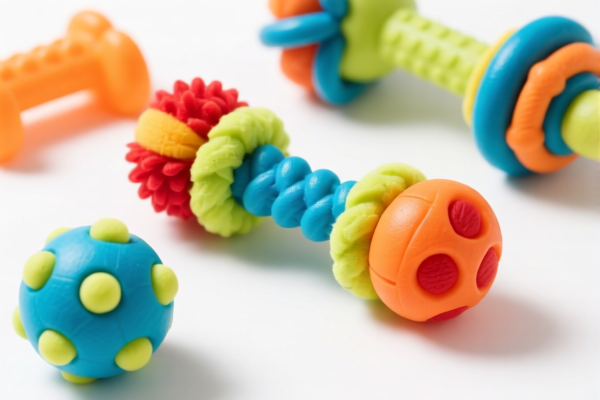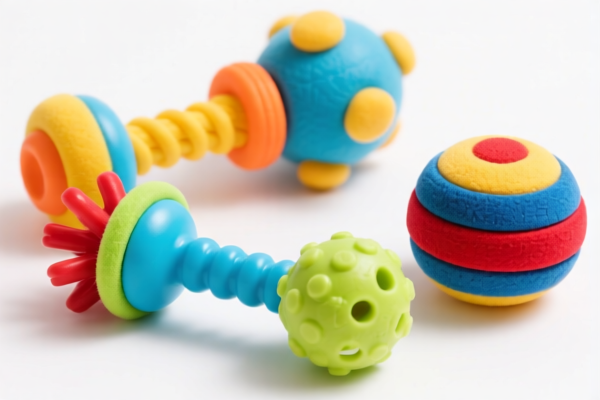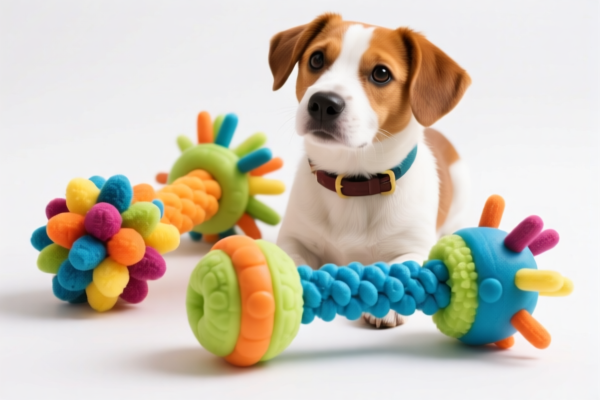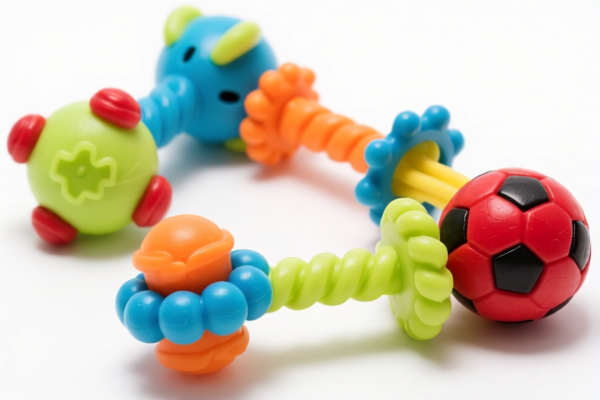| HS Code | Official Doc | Tariff Rate | Origin | Destination | Effective Date |
|---|---|---|---|---|---|
| 9503000090 | Doc | 30.0% | CN | US | 2025-05-12 |
| 9503000071 | Doc | 30.0% | CN | US | 2025-05-12 |
| 3926904000 | Doc | 32.8% | CN | US | 2025-05-12 |
| 3924905650 | Doc | 40.9% | CN | US | 2025-05-12 |
| 9619009000 | Doc | 44.5% | CN | US | 2025-05-12 |




Cat Teasing Toys
Cat teasing toys, also known as interactive cat toys, are designed to stimulate a cat’s natural hunting instincts through play, providing both physical and mental enrichment. They differ from passive toys like stuffed animals in that they require active participation from the cat and, usually, a human operator.
Material
A wide variety of materials are used in the construction of cat teasing toys, impacting durability, safety, and appeal:
- Feathers: Lightweight and visually stimulating, often attached to wands or strings. Natural feathers are popular but can be a choking hazard if ingested; synthetic alternatives are available.
- Plastics: Used for handles, bodies of motorized toys, and components of various attachments. Polypropylene is a common choice.
- Wood: Can be found in handles or as part of the toy’s structure. Must be non-toxic and splinter-free.
- Fabric: Used for attachments, often in the form of mice, fish, or other prey shapes. Cotton and polyester are common.
- Metal: Typically used for internal components of motorized toys or in durable wand structures. Stainless steel is preferred for safety.
- Elastic/String: Used to create movement and simulate prey. Must be strong enough to withstand pulling and chewing, and not easily ingested.
Purpose
The primary purposes of cat teasing toys are:
- Exercise: Encourages physical activity, helping to combat obesity and maintain a healthy weight.
- Mental Stimulation: Provides cognitive enrichment by engaging the cat’s hunting instincts and problem-solving skills.
- Bonding: Facilitates interaction between cats and their owners.
- Stress Relief: Allows cats to express natural behaviors, reducing boredom and anxiety.
- Redirecting Behavior: Can redirect destructive behaviors, such as scratching furniture, towards appropriate play.
Function
Cat teasing toys function by mimicking the movements and characteristics of prey animals. This triggers a cat’s predatory sequence, which includes:
- Stalking: The cat carefully approaches the toy, often crouching low to the ground.
- Chasing: The cat pursues the moving toy.
- Pouncing: The cat leaps upon the toy, attempting to capture it.
- Biting/Kicking: The cat uses its claws and teeth to “kill” the prey.
- Carrying: Some cats will carry the toy around, demonstrating their success.
Usage Scenarios
- Indoor Play: Most commonly used indoors to provide cats with exercise and stimulation.
- Interactive Play Sessions: Require active participation from the owner, typically involving waving the toy around to mimic prey movement.
- Solo Play (Limited): Some toys are designed for solo play, such as those with automatic movement, but these are generally less effective than interactive sessions.
- Training: Can be used to encourage cats to exercise or to redirect unwanted behaviors.
Common Types
- Wand Toys: A stick or wand with a string and an attachment (feather, mouse, ribbon). Highly interactive and versatile.
- Laser Pointers: Use a laser beam to create a moving target. While popular, caution is advised as they can cause frustration if the cat cannot “catch” the beam.
- Automatic Teasing Toys: Battery-operated toys that move automatically, providing solo play options. These can include rotating lasers, moving mice, or fluttering butterflies.
- Teaser Wands with Interchangeable Attachments: Allow for variety in play by swapping out different attachments.
- Catnip Toys: Toys infused with catnip, which stimulates many cats and encourages play. Often combined with other teasing toy elements.
- Puzzle Toys: Require cats to manipulate the toy to access a treat or reward, providing mental stimulation. Some incorporate movement to simulate prey.
- Fishing Rod Toys: Similar to wand toys, but with a longer, more flexible rod, allowing for greater range of motion.
Cat teasing toys fall under the category of toys, specifically those encompassing tricycles, scooters, pedal cars and similar wheeled toys; dolls’ carriages; dolls, other toys; reduced-scale (“scaleˮ) models and similar recreational models, working or not; puzzles of all kinds; parts and accessories thereof. Here are the relevant HS codes based on the provided reference material:
- 9503000090: This HS code covers tricycles, scooters, pedal cars and similar wheeled toys; dolls’ carriages; dolls, other toys; reduced-scale (“scaleˮ) models and similar recreational models, working or not; puzzles of all kinds; parts and accessories thereof. The base tariff is 0.0%, with a surcharge of 0.0%. However, a surcharge of 30.0% will be applied after April 2, 2025, resulting in a total tariff of 30.0%.
- 9503000071: This HS code also covers tricycles, scooters, pedal cars and similar wheeled toys; dolls’ carriages; dolls, other toys; reduced-scale (“scaleˮ) models and similar recreational models, working or not; puzzles of all kinds; parts and accessories thereof, specifically categorized as “Children’s products” as defined in 15 U.S.C. § 2052, labeled or determined by the importer as intended for use by persons under 3 years of age. The base tariff is 0.0%, with a surcharge of 0.0%. A surcharge of 30.0% will be applied after April 2, 2025, resulting in a total tariff of 30.0%.
It is important to determine if the cat teasing toys are specifically intended for children under 3 years of age. If so, HS code 9503000071 would be the more appropriate classification. Otherwise, HS code 9503000090 should be used.
Customer Reviews
No reviews yet.